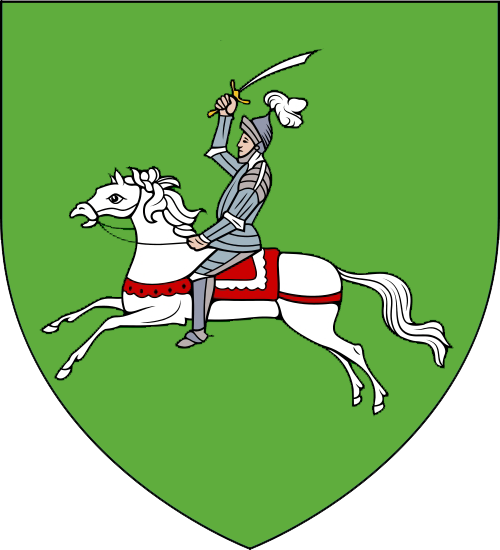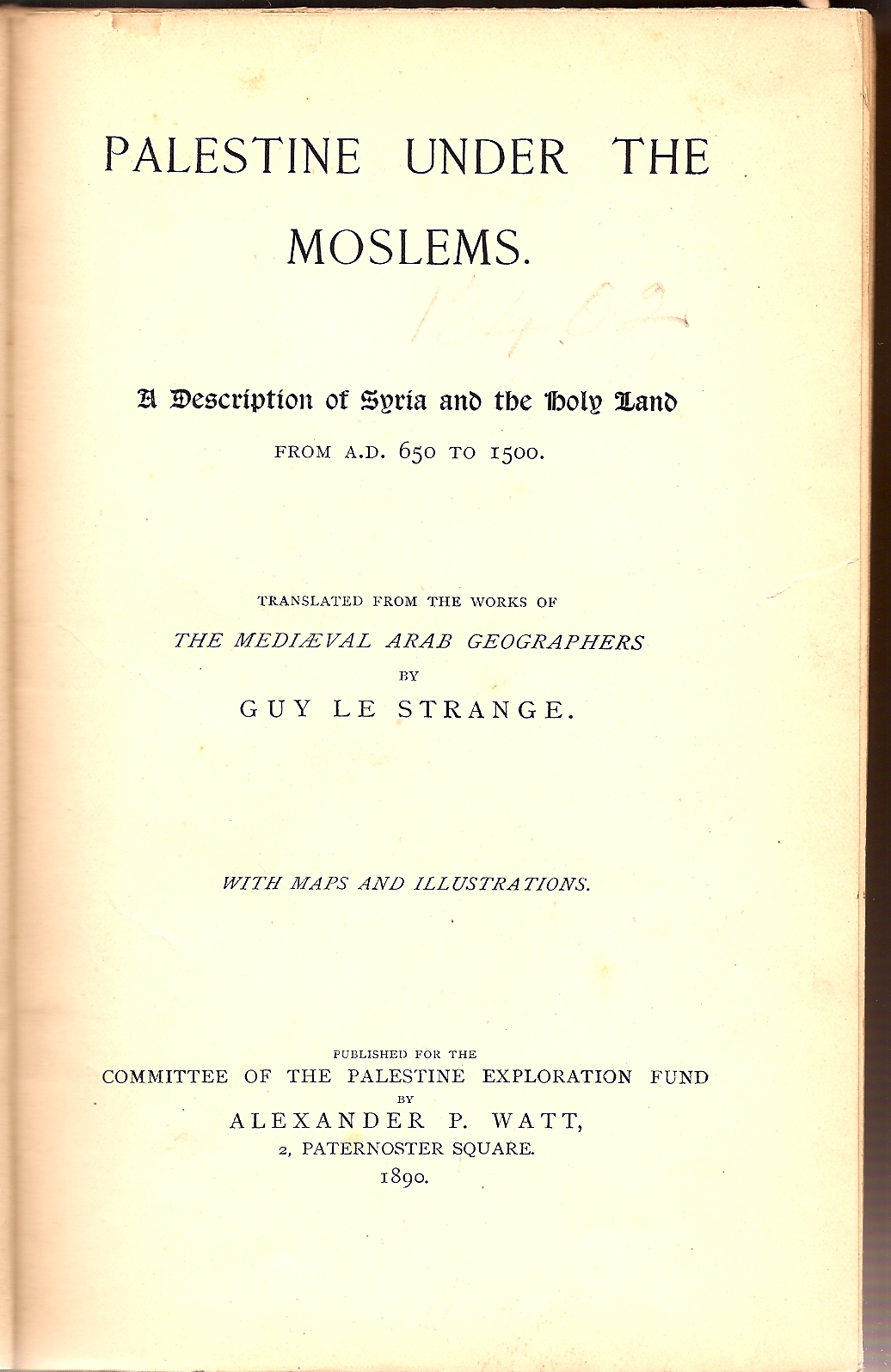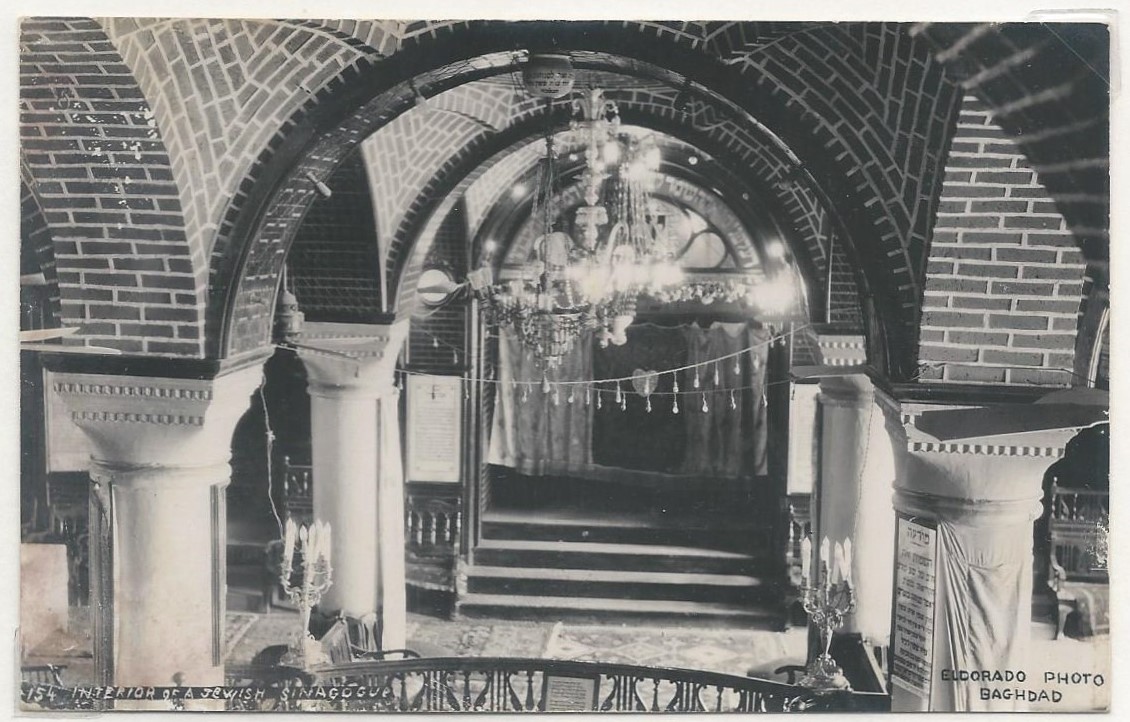|
Qasr Ibn Hubayra
Qasr Ibn Hubayra ( ar, قصر ابن هبيرة) was a city of medieval Iraq, north of Hillah and Babylon. History The name ''Qasr Ibn Hubayrah'' means "the castle or palace of Ibn Hubayra", referring to the city's founder, Yazid ibn Umar ibn Hubayra. He had been governor of Iraq in the late 740s, under the Umayyad caliph Marwan II, but died before his palace was completed. It was located midway between Kufa in the south and Baghdad in the north, close to the Euphrates river and amidst the various channels that were used for carrying goods to the town's markets. The later geographer Yaqut al-Hamawi reports that the first Abbasid caliph, al-Saffah, oversaw its completion, then took up residence there. Al-Saffah named it al-Hashimiya after his ancestor, Hashim, but the name never achieved widespread use. The city thus reportedly served as the capital of the nascent Abbasid Caliphate, before the construction of Baghdad. It is likely, however, that Yaqut confused his acco ... [...More Info...] [...Related Items...] OR: [Wikipedia] [Google] [Baidu] |
Iraq
Iraq,; ku, عێراق, translit=Êraq officially the Republic of Iraq, '; ku, کۆماری عێراق, translit=Komarî Êraq is a country in Western Asia. It is bordered by Turkey to Iraq–Turkey border, the north, Iran to Iran–Iraq border, the east, the Persian Gulf and Kuwait to the southeast, Saudi Arabia to the south, Jordan to Iraq–Jordan border, the southwest and Syria to Iraq–Syria border, the west. The Capital city, capital and largest city is Baghdad. Iraq is home to diverse ethnic groups including Iraqi Arabs, Kurds, Iraqi Turkmen, Turkmens, Assyrian people, Assyrians, Armenians in Iraq, Armenians, Yazidis, Mandaeans, Iranians in Iraq, Persians and Shabaks, Shabakis with similarly diverse Geography of Iraq, geography and Wildlife of Iraq, wildlife. The vast majority of the country's 44 million residents are Muslims – the notable other faiths are Christianity in Iraq, Christianity, Yazidism, Mandaeism, Yarsanism and Zoroastrianism. The official langu ... [...More Info...] [...Related Items...] OR: [Wikipedia] [Google] [Baidu] |
Abbasid Caliphate
The Abbasid Caliphate ( or ; ar, الْخِلَافَةُ الْعَبَّاسِيَّة, ') was the third caliphate to succeed the Islamic prophet Muhammad. It was founded by a dynasty descended from Muhammad's uncle, Abbas ibn Abdul-Muttalib (566–653 CE), from whom the dynasty takes its name. They ruled as caliphs for most of the caliphate from their capital in Baghdad in modern-day Iraq, after having overthrown the Umayyad Caliphate in the Abbasid Revolution of 750 CE (132 AH). The Abbasid Caliphate first centered its government in Kufa, modern-day Iraq, but in 762 the caliph Al-Mansur founded the city of Baghdad, near the ancient Babylonian capital city of Babylon. Baghdad became the center of science, culture and invention in what became known as the Golden Age of Islam. This, in addition to housing several key academic institutions, including the House of Wisdom, as well as a multiethnic and multi-religious environment, garnered it a worldwide reputation as the ... [...More Info...] [...Related Items...] OR: [Wikipedia] [Google] [Baidu] |
Babil Governorate
Babil Governorate or Babylon Province ( ar, محافظة بابل ''Muḥāfaẓa Bābil'') is a governorate in central Iraq. It has an area of , with an estimated population of 2,065,042 people in 2018. The provincial capital is the city of Hillah, which lies opposite the ancient city of Babylon (بابل), on the Euphrates river. History The ancient city of Babylon in present-day Babylon Province was the capital of ancient Babylonia, situated on the Euphrates river south of Baghdad, Iraq. The city was occupied from the 3rd millennium BC but became important early in the 2nd millennium under the kings of the First Dynasty of Babylon. The sixth king of this dynasty was Hammurabi (1792–1750 BC) who made Babylon the capital of a vast empire and is best remembered for his code of laws. The city peaked in pre-eminence when Nabopolassar (626–605 BC) and his successor and son Nebuchadnezzar II (605–562 BC) extended the Neo-Babylonian Empire over most of Western Asia. Bestowing ... [...More Info...] [...Related Items...] OR: [Wikipedia] [Google] [Baidu] |
740s Establishments
74 may refer to: * 74 (number) * one of the years 74 BC, AD 74, 1974, 2074 * The 74, an American nonprofit news website * Seventy-four (ship) The "seventy-four" was a type of two- decked sailing ship of the line, which nominally carried 74 guns. It was developed by the French navy in the 1740s, replacing earlier classes of 60- and 62-gun ships, as a larger complement to the recently-de ..., a type of two-decked sailing ship See also * List of highways numbered * {{Numberdis ... [...More Info...] [...Related Items...] OR: [Wikipedia] [Google] [Baidu] |
Hindiya Barrage
The Hindiya Barrage is a barrage on the Euphrates south of the town of Musayyib in Babil Governorate of Iraq. Located north of the Al-Hindiya District, it was designed by British civil engineer William Willcocks in response to the silting up of the Hillah branch of the Euphrates. Construction of the dam, with a length of over , lasted between 1911 and 1913. Between 1984 and 1989, a new dam was built several kilometres upstream as a replacement for the Hindiya Barrage. Background and planning Until 1875, the Euphrates split into two channels south of the town of Musayyib; the western Hindiya branch and the eastern Hillah branch. Due to changes in the water management of the wider Tigris–Euphrates river system in 1875, severe floodings of the Euphrates downstream from Fallujah occurred. As a result of these floodings, discharge into the lower Hindiya branch increased and the Hillah branch started to silt up. In 1909, discharge into the Hillah branch had been reduced to per secon ... [...More Info...] [...Related Items...] OR: [Wikipedia] [Google] [Baidu] |
McGuire Gibson
The MacGuire ( ) family is an Irish clan based in County Fermanagh. The name derives from the Gaelic , which is "son of Odhar" meaning "dun", "dark one". According to legend, this relates to the eleventh descendant of Colla da Chrich, great-grandson of Cormac mac Airt, who was monarch of Ireland about the middle of the third century. From the 13th to the 17th centuries, the MacGuires were kings of Fermanagh. Naming conventions The surname has been anglicized variously as McGuire, McGwire, McGwyre and most commonly, Maguire (from variant Irish spelling ''Mag Uidhir''). History The MacGuire sept is primarily associated with modern-day County Fermanagh. They possessed the entire county, also known as Maguire's Country, from about 1250 C.E. and maintained their independence as Lords of Fermanagh down to the reign of King James VI & I, when their country was confiscated like other parts of Ulster. The MacGuires supplied Chiefs or Princes to Fermanagh, from about A.D. 1264, when the ... [...More Info...] [...Related Items...] OR: [Wikipedia] [Google] [Baidu] |
Guy Le Strange
Guy Le Strange (24 July 1854 – 24 December 1933) was a British Orientalist noted especially for his work in the field of the historical geography of the pre-modern Middle Eastern and Eastern Islamic lands, and his editing of Persian geographical texts. He was a scholar of the Persian, Arabic, and Spanish languages. Le Strange was one of the original trustees of the E. J. W. Gibb Memorial, an organisation which since 1905 has published the Gibb Memorial Series. He was born in Brussels, Belgium, the youngest child of Henry L'Estrange Styleman Le Strange of Hunstanton Hall, Norfolk, educated at Clifton College and died in Cambridge Cambridge ( ) is a College town, university city and the county town in Cambridgeshire, England. It is located on the River Cam approximately north of London. As of the 2021 United Kingdom census, the population of Cambridge was 145,700. Cam ....Probate Registry Grant – Feb 1934. Works Books * * * * * * Index Articles * References ... [...More Info...] [...Related Items...] OR: [Wikipedia] [Google] [Baidu] |
Jama Masjid
A congregational mosque or Friday mosque (, ''masjid jāmi‘'', or simply: , ''jāmi‘''; ), or sometimes great mosque or grand mosque (, ''jāmi‘ kabir''; ), is a mosque for hosting the Friday noon prayers known as ''jumu'ah''.* * * * * * * * * It can also host the Eid prayers in situations when there is no ''musalla'' or ''eidgah'' available nearby to host the prayers. In early Islamic history, the number of congregational mosques in one city was strictly limited. As cities and populations grew over time, it became more common for many mosques to host Friday prayers in the same area. Etymology The full Arabic term for this kind of mosque is ''masjid jāmi‘'' (), which is typically translated as "mosque of congregation" or "congregational mosque". "Congregational" is used to translate ''jāmi‘'' (), which comes from the Arabic root "ج - م - ع" which has a meaning ‘to bring together’ or ‘to unify’ (verbal form: and ). In Arabic, the term is typically simplifie ... [...More Info...] [...Related Items...] OR: [Wikipedia] [Google] [Baidu] |
History Of The Jews In Iraq
The history of the Jews in Iraq ( he, יְהוּדִים בָּבְלִים, ', ; ar, اليهود العراقيون, ) is documented from the time of the Babylonian captivity c. 586 BC. Iraqi Jews constitute one of the world's oldest and most historically significant Jewish communities. The Jewish community of what is termed in Jewish sources "Babylon" or "Babylonia" included Ezra the scribe, whose return to Judea in the late 6th century BCE is associated with significant changes in Jewish ritual observance and the rebuilding of the Temple in Jerusalem. The Babylonian Talmud was compiled in "Babylonia", identified with modern Iraq. From the biblical Babylonian period to the rise of the Islamic caliphate, the Jewish community of "Babylon" thrived as the center of Jewish learning. The Mongol invasion and Islamic discrimination in the Middle Ages led to its decline. Under the Ottoman Empire, the Jews of Iraq fared better. The community established modern schools in the second ... [...More Info...] [...Related Items...] OR: [Wikipedia] [Google] [Baidu] |
Al-Muqaddasi
Shams al-Dīn Abū ʿAbd Allāh Muḥammad ibn Aḥmad ibn Abī Bakr al-Maqdisī ( ar, شَمْس ٱلدِّيْن أَبُو عَبْد ٱلله مُحَمَّد ابْن أَحْمَد ابْن أَبِي بَكْر ٱلْمَقْدِسِي), better known as al-Maqdisī ( ar, links=no, ٱلْمَقْدِسِي) or al-Muqaddasī ( ar, links=no, ٱلْمُقَدَّسِي), ( – 991) was a medieval Arab geographer, author of ''Aḥsan al-taqāsīm fī maʿrifat al-aqālīm'' (''The Best Divisions in the Knowledge of the Regions''), as well as author of the book, ''Description of Syria (Including Palestine)''. He is one of the earliest known historical figures to self-identify as a Palestinian during his travels. Biography Sources Outside of his own work, there is little biographical information available about al-Maqdisi.Miquel 1993, p. 492. He is neither found in the voluminous biographies of Ibn Khallikan (d. 1282) nor were the aspects of his life mentioned in the works of his ... [...More Info...] [...Related Items...] OR: [Wikipedia] [Google] [Baidu] |
Sura Canal
A ''surah'' (; ar, سورة, sūrah, , ), is the equivalent of "chapter" in the Qur'an. There are 114 ''surahs'' in the Quran, each divided into '' ayats'' (verses). The chapters or ''surahs'' are of unequal length; the shortest surah (''Al-Kawthar'') has only three verses while the longest ('' Al-Baqara'') contains 286 verses. Muhammad Mustafa Al-A'zami (2003), ''The History of The Qur'anic Text: From Revelation to Compilation: A Comparative Study with the Old and New Testaments'', p.70. UK Islamic Academy. . Of the 114 chapters in the Quran, 86 are classified as Meccan, while 28 are Medinan. This classification is only approximate in regard to the location of revelation; any chapter revealed after migration of Muhammad to Medina (''Hijrah'') is termed Medinan and any revealed before that event is termed Meccan. The Meccan chapters generally deal with faith and scenes of the Hereafter while the Medinan chapters are more concerned with organizing the social life of the nascen ... [...More Info...] [...Related Items...] OR: [Wikipedia] [Google] [Baidu] |
Al-Baladhuri
ʾAḥmad ibn Yaḥyā ibn Jābir al-Balādhurī ( ar, أحمد بن يحيى بن جابر البلاذري) was a 9th-century Muslim historian. One of the eminent Middle Eastern historians of his age, he spent most of his life in Baghdad and enjoyed great influence at the court of the caliph al-Mutawakkil. He travelled in Syria and Iraq, compiling information for his major works. His full name was Ahmad Bin Yahya Bin Jabir Al-Baladhuri ( ar, أحمد بن يحيى بن جابر البلاذري), Balazry Ahmad Bin Yahya Bin Jabir Abul Hasan or Abi al-Hassan Baladhuri. Biography Al-Baladhuri's ethnicity has been described as Arab and Persian, although his sympathies seem to have been strongly with the Arabs, for Masudi refers to one of his works in which he rejects Baladhuri's condemnation of non-Arab nationalism Shu'ubiyya. He lived at the court of the caliphs al-Mutawakkil and Al-Musta'in and was tutor to the son of al-Mutazz. He died in 892 as the result of a drug called ... [...More Info...] [...Related Items...] OR: [Wikipedia] [Google] [Baidu] |
.jpg)



.jpg)

.jpg)